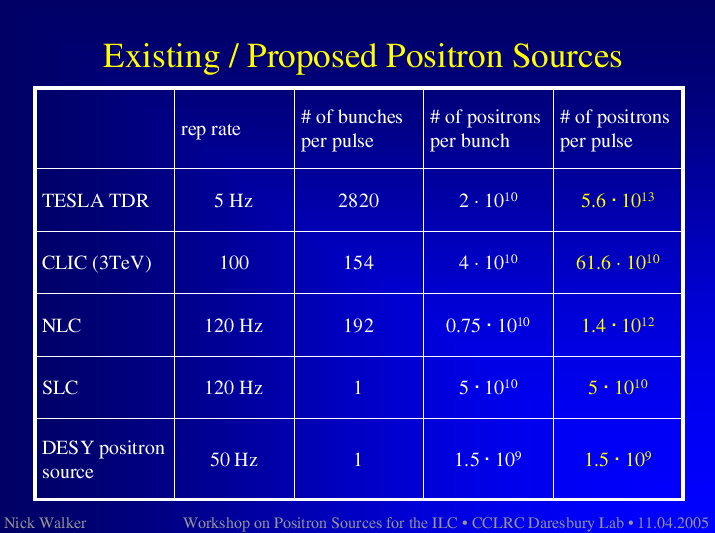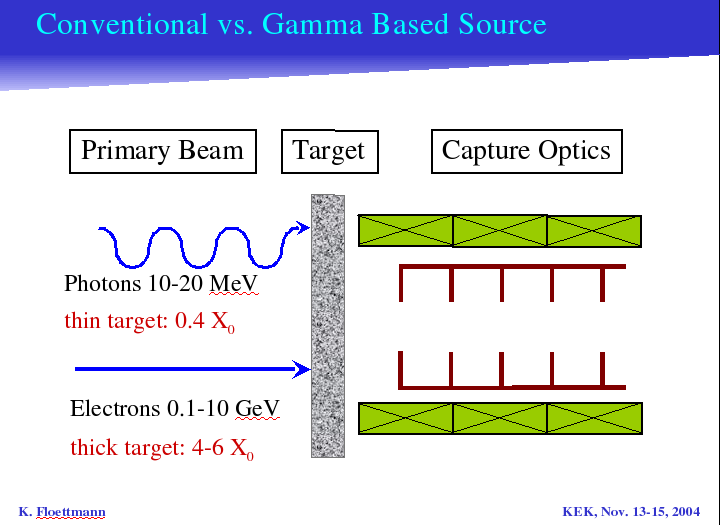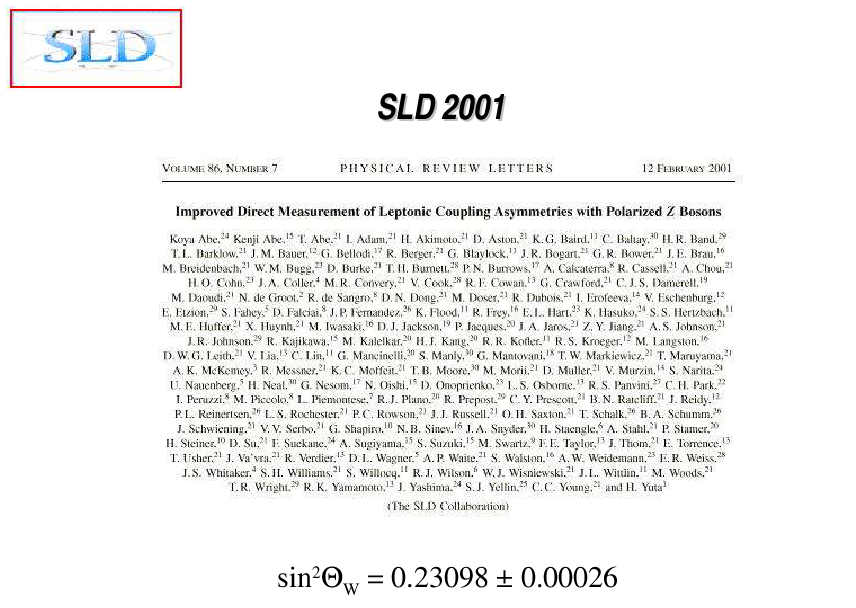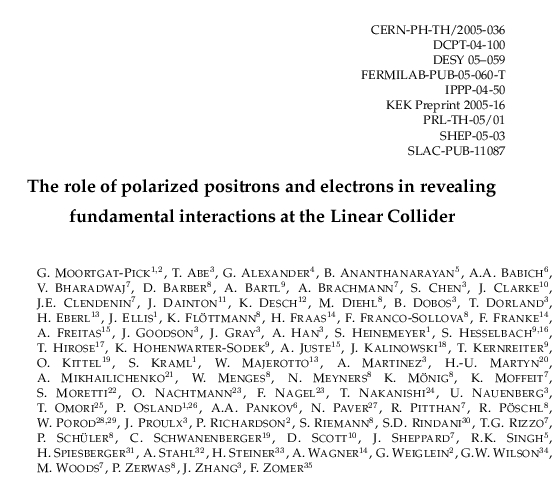
An overview about the ILC parameters and the demands on the positron source is given in this talk: The ILC requires a large amount of positrons, about three orders of magnitude higher per pulse than at the positron source of SLC (see picture). Positrons have to be produced from photons of some MeV energy via pair production in a target: either the photons are produced via bremsstrahlung from electrons in electromagnetic cascade processes in a rather thick target or via radiation processes of an electron beam and the direct conversion in a rather thin target. |

Three kinds of positron sources for the ILC are under discussion: More technical details, BCD design, current R&D status (in particular of prototypes ) and still critical issues like target, availability, stacking are linked. |

